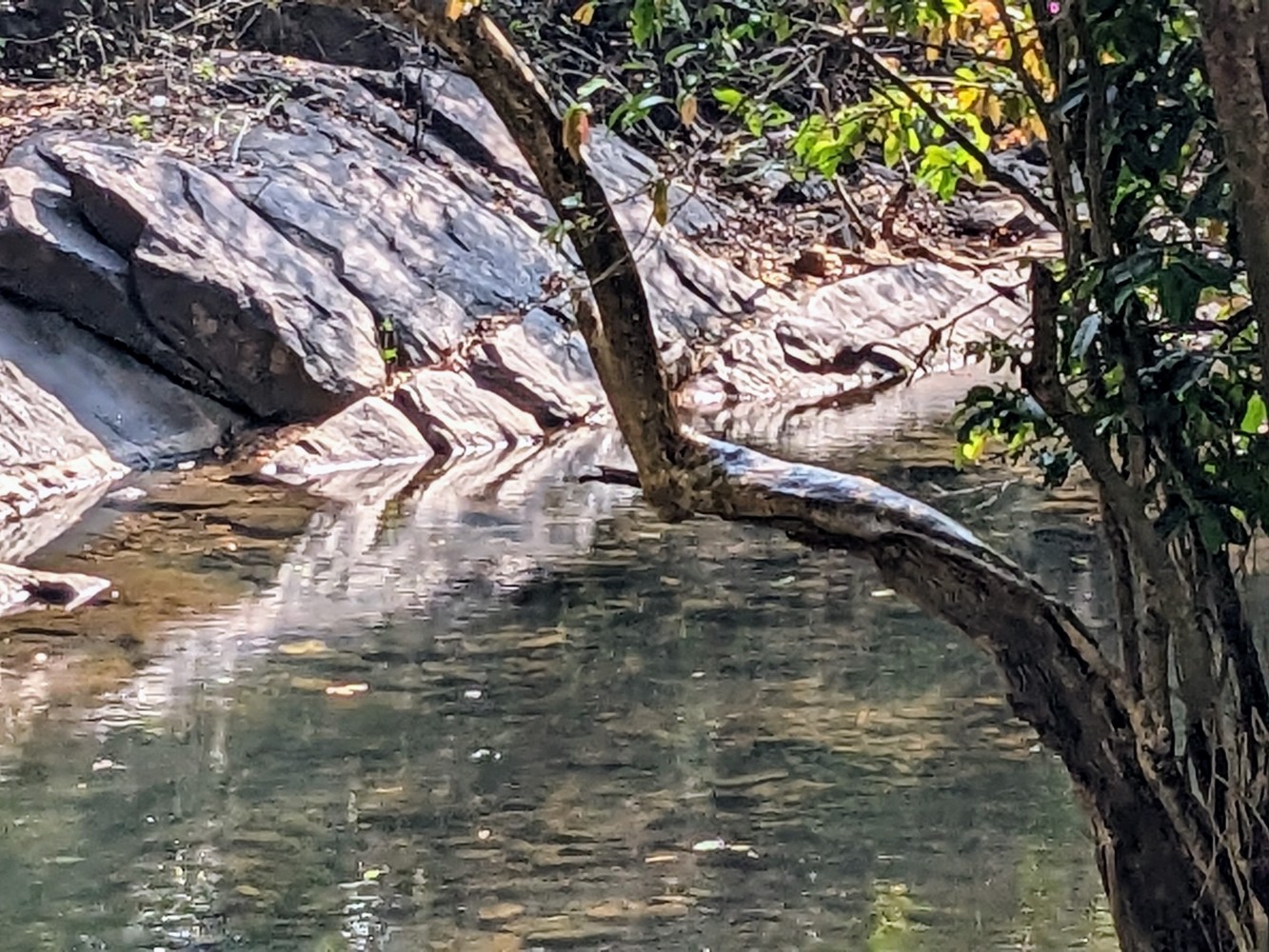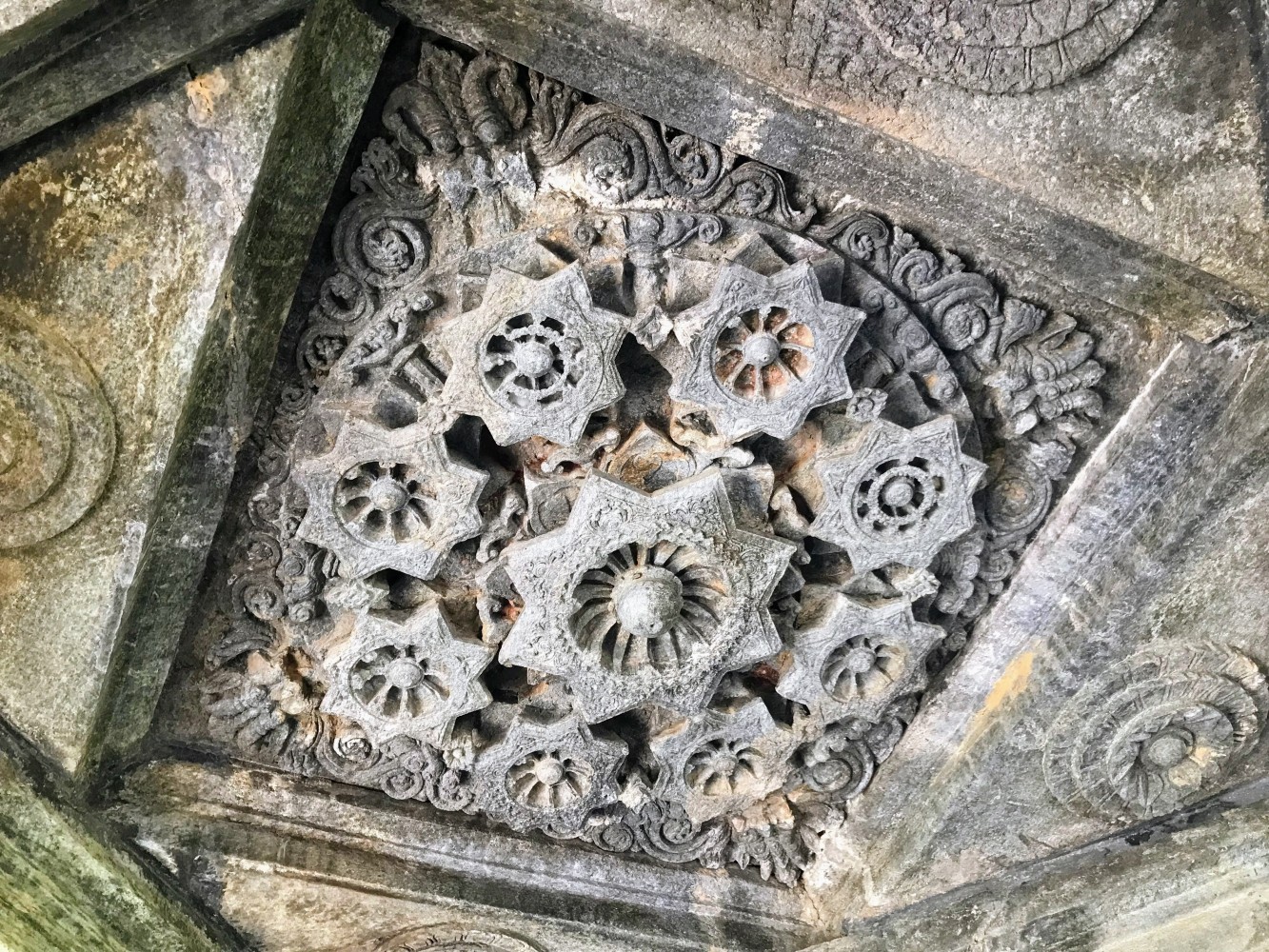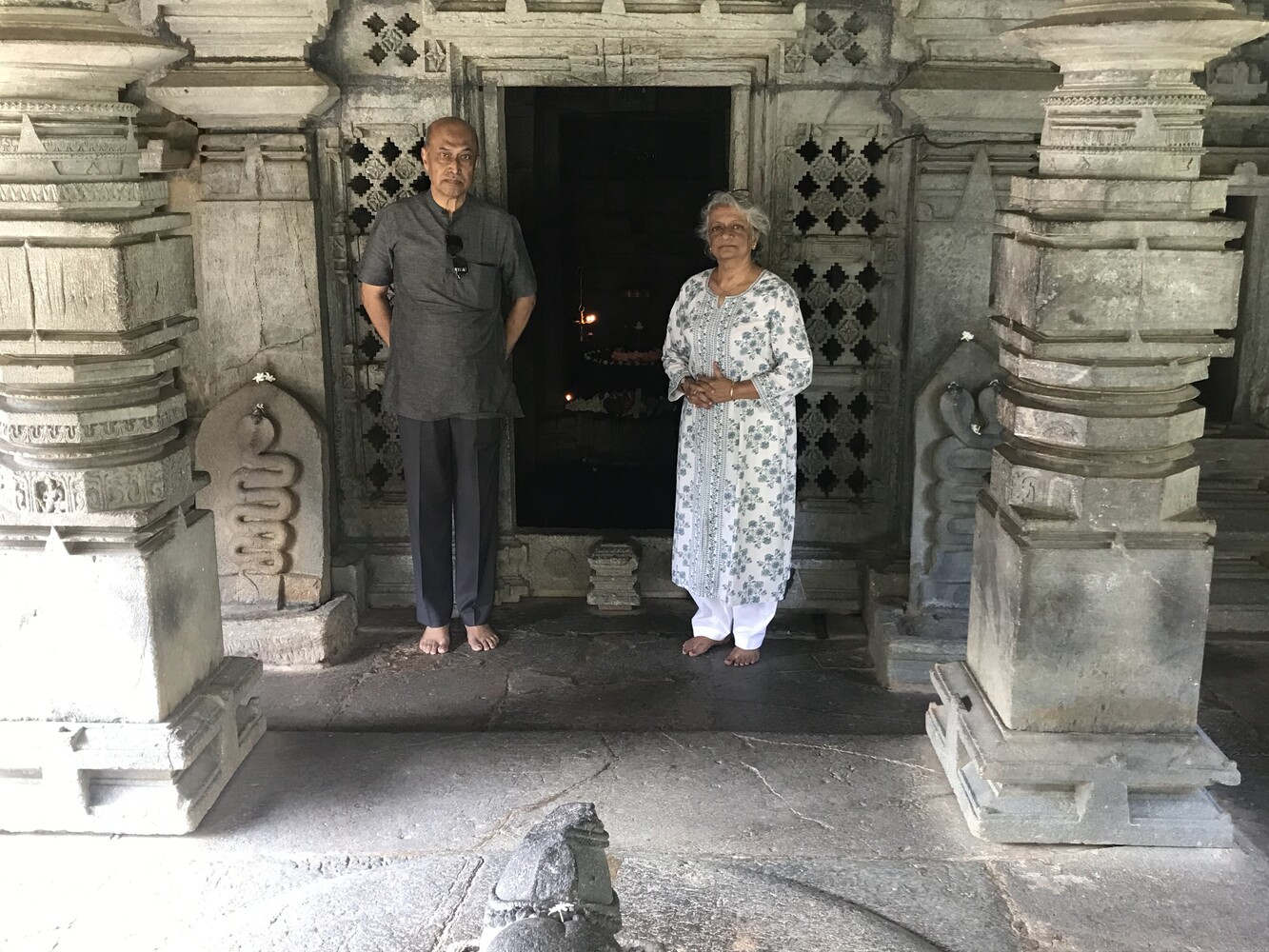The ‘to do’ for tourists in Goa is likely to miss listing a visit to the Tambdi Surla Mahadev Temple. The temple is located as far away as possible (and still be within Goa) from the tourist corridor that runs North-South close to the famous beaches, forts, churches, temples, casinos, and other attractions in Goa. The 12th-century Shiva temple, the most ancient of the temples in the state, is located inside the Bhagwan Mahavir National Park, about 70 km almost directly East of Panjim near Goa’s border with Karnataka. Keen to visit the less popular destinations, we left home immediately after breakfast for the temple, on a January morning. Google Maps informed us that it will take us about an hour and fifty minutes to reach the temple.

The route to the temple passed through some of the most scenic areas on the banks of the Mandovi river. About 20 km away from the temple we lost network connectivity freezing thereby our location on Google Maps. The drive from thereon was with the help of the roadside signboards on which one has come to rely with much less conviction after getting used to navigation using Google Maps. After missing a few turns and retracing our steps on a couple of occasions and asking for direction from the rare people on the road we reached the gate of the Bhagwan Mahavir National Park still about 10 km away from the temple. The gate was open, and visitors were welcomed by the absent guards and entry fee, albeit with a terse instruction displayed on a board not to litter the park. The frozen path on Google Maps was our guide for driving inside the park toward the temple.
The road inside the park offered a lovely drive with dense foliage on both sides of the road. We duly reached the temple and parked the car off the road. As we alighted from our vehicle, several women accosted us. They were selling small wicker baskets with the items needed to offer prayer at the temple – a coconut, flowers, and incense sticks. We bought two baskets, one each for the two families the four of us represented. Next to the road were two stalls that offered tea, soft drinks, packets of biscuits, chips, and namkeen, and hot potato bondas and vegetable pakoras.

To reach the temple, we had to cross a wide bridge across a deep stream. The bridge led to a cobbled path that took visitors to the gate of the garden surrounding the temple. There were stone steps from the path on our left that led to the stream below. The steadily flowing water in the stream was crystal clear. The large number of fish in the water signaled that the water was clean. The stream is called the Surla River by the locals though the river is not listed among the rivers of Goa. Entirely unmindful of their human cousins, scores of red-bottomed monkeys were frolicking on the path and the trees lining the path.
We stopped just outside the gate to read a brief description of the temple on a plaque by the side of the gate. As we entered the well-maintained garden, with manicured lawns and hedges, the full temple, about 10-15 meters tall at its tallest point came into view. The bright afternoon sun made no impression on the charcoal grey stones the temple was made of as they absorbed the rays of the sun with utter imperviousness. I stood in awe as I beheld the temple – by the aura of timelessness exuded by the structure.
There are two versions of who built the temple. One version believes that the temple was built in the 12th century by Kamladevi, one of the queens of the Kadamba dynasty that ruled Goa from the 10th to the 14th century. The second version asserts that the temple was built by Hemadri, a Minister of one of the Kings of the Yadava dynasty that ruled a large part of the Deccan region from the 12th to the 14th century. Be that as it may, the choice of the remote location was consistent with the practice of building temples in inaccessible locations to make the worshippers struggle to reach the deities that resided in the temples. Set against a hill and encircled by a gurgling river with dense forest all around, the location of the temple would have been forbidding to reach one thousand years ago. Access to the temple has become much easier with the building of the road through the forest, the bridge across the river, the cobbled path from the bridge, the garden on flattened land around the temple, and navigation using Google Maps. I often think that ease of access is inversely related to the shraddha (faith) Gods can invoke among the visitors to their abode.
Like the debate on who built the temple, there is disagreement about the material the rocks used for the temple are made of. One assertion is that the temple is made from basalt which is a hard black volcanic rock that is found in abundance in the earth’s crust. The second assertion is that the temple is made from grey-black soapstone. Both types of rocks are weather and wear-resistant, preserving thereby the intricacies of the carvings. The temple faces East. The rays of the morning sun light up the Shiva Linga that is installed on a pedestal in the Garbha Griha (Sanctum Sanctorum) of the temple. The Nandi, Lord Shiva’s vahana (vehicle), sits in the center of the small mandapa (the entrance porch) of the temple facing the Garbha Griha. The head of the Nandi is missing – the only visible sign of disfigurement of the temple.
The mandapa is covered with a sloping roof made from slabs of rocks. The slabs are supported by columns erected by mounting smaller geometric columns on top of each other. The walls and the columns of the temple are adorned with numerous intricate carvings of Lord Shiva, Lord Vishnu, and Lord Brahma and their consorts. The ceiling right above the Nandi has a beautiful carving of a collection of lotus flowers.

There were just four other people in addition to the four of us. While two were clearly tourists like us, we were uncertain whether the two men who were seated on one of the stone slabs of the mandapa conversing with each other were tourists. An oil lamp lit inside the Garbha Griha was casting barely visible gently flickering shadows on the walls of the innermost chamber. With some hesitation, we approached the two men and inquired how we could offer the coconut and the flowers we carried to the deity without a Pujari. One of the men, who might have been the Pujari of the temple, said, “You can enter the Garbha Griha and offer them directly to the deity.” This was highly unusual. Worshippers are not allowed to enter the Garbha Griha of temples, and the offering must be handed over to the Pujari who in turn would offer them to the deity and give back a part of the offering to the worshippers as prasad. The direct connection to God without an intermediary was a big surprise! We were not only permitted to enter the Garbha Griha and be in direct communion with Lord Shiva, but we could also spend as much time as we desired in the Lord’s company!

On our way back, we went down the stone steps and dipped our feet in the cool waters of the Surla River. We then stopped at the stalls and ordered tea, bondas, and pakoras that were fried in a large iron kadai (wok) in our presence. The delicious bondas and pakoras were badly needed to subdue the pangs of hunger we were experiencing from the walk to and around the temple. The piping hot tea that followed was invigorating. We asked the stall owners about the number of visitors to the temple. They informed us that there was a trickle of visitors every day, with more visitors on weekends and holidays. The number of visitors on Shivratri days was generally large, particularly on the day of Mahashivratri. The word Shivratri literally means the ‘night of Lord Shiva’. It is the last day of a lunar month with a moonless night. As the length of a lunar month is about 29.53 days, there are generally 12 Shivratris annually. The Shivratri just before the onset of summer, in the month of February/March every year, is called Mahashivratri. This day holds a special significance for devotees of Lord Shiva.
As we drove away from the temple, I reflected on my visits to the more well-known temples in Goa which are popular with tourists – such as Shree Shanta Durga Mandir and Shree Mangeshi Temple. Unlike the indifferent experience during my visits to those temples, I experienced serenity and freedom of spirit during the visit to the Tambdi Surla Mahadev Temple. This ancient Mahadev temple ought to be on the bucket list of every visitor to Goa.
